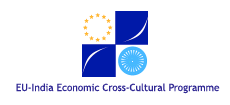
Water is an essential resource for the survival of any community. Several cultures in historic times have had to abandon their land and settle elsewhere, in search of water. Thanks to population growth the world over, water has become a scarce commodity in many places and, along with food, is one of the critical issues facing humankind as a whole.
India is a good example of the criticality of water resources. In the past fifty years, the population has almost trebled and the water table has gone down by a factor of half or more. Urbanisation and industrialisation have also contributed, both directly and indirectly, to creating a difficult situation.
For example, the large-scale felling of trees and global warming have led to changing rainfall patterns, sometimes with disastrous results. While ideally India should have forest cover of one third of its area, the latest satellite imagery shows that cover has shrunk to less than about ten percent. Today, except for parts of North Eastern India, Kerala and a few other regions, much of India faces varying degrees of difficulty in harnessing and utilising water resources. On the other hand, the rivers in India empty some eighty five percent of their waters into the sea.
Industrialisation and urbanisation have contributed directly to the contamination of ground water and water bodies in general. In some cases, contamination is through chemical effluents and in others it is through sewerage. So an area near Patancheru in Hyderabad was chosen for the pilot project on hydrology because here we have a typical case study involving the conflict of three interests, represented by industry, agriculture and residence. All these activities have their own demands and contribute to water depletion and contamination. In particular, contamination by chemical effluents poses a severe problem here because of the granitic substructure, which could trap these effluents
The problem and the conflicts require management, conservation and technological alternatives for their resolution. The necessary measures would include water treatment, new methods of farming, for example with drip irrigation and water recycling plants, and a proper network of suitable outlets.
The pilot project aims to look into these various problems and to produce certain suggestions, solutions and observations.

